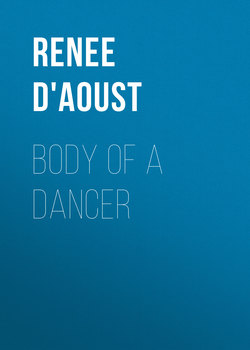Читать книгу Body of a Dancer - Renee D'Aoust - Страница 20
ОглавлениеAct Three
“[Martha Graham] said so many interesting things, such as, ‘I never think a dancer is alone on stage because there is always the relationship to surrounding space.’ My imagination had not run to the possibility of space as a partner.What a comfort that might have been.”
—Margot Fonteyn, Margot Fonteyn: Autobiography
Dancing in the Park
July. Hot. Humid. Upper Manhattan. My black leather dance bag is heavy. We’re walking across Dyckman Street, to the edge of Fort Tryon Park, and it looks as if there is very little shade from the trees along either side of the blacktop where we are to perform. The other dancers go on ahead, but I stop at the corner Korean deli at Dyckman and Broadway. Buy two bottles of Gatorade: one, yellowish-green; the other, orange.
Dancing in the park—a ritual during summer in New York City. I’m only making twenty-five dollars a pop for this gig, but it is money and I need it. At least the leg goes high with all the humidity. The hips loosen up, everything is well-oiled. I can’t think straight because of heat headaches, but I don’t care because my legs are kissing my ears. I’ve never had great extension, except during a New York summer for a New York minute. The only people to see my legs and their glorious extension are the regular folks who come to the park because they have no air conditioning.
We’re a ragtag group of dancers. Some of us take the park performances very seriously. You never know who might be watching! Some of us think the park performances are a riot, something New York to write about to the folks back home.
For me, it’s another in a long list of experiences I never dreamed of when I took ballet classes six days a week as a kid. “Just think,” Flemming Halby should have said, “someday you’ll perform in a New York City park at high noon.”
We’re dressed in silver colored unitards with chiffon over top. We’ve decided we’re fairies because it provides a reason for gossamer gowns and this dance.
High noon. The show must start on time. After looking for heroin needles, Frank brushed the cement with a broom he brought with him from home and then set up the sound equipment. Sound is just a big old boom box, but we call it sound equipment. That means we are engaged in important and prestigious artistic work. The reality is that we are performing in 100 degree Fahrenheit heat in Upper Manhattan on a Tuesday. Sweat is already showing through our armpits and around our crotches. We’re excited because we were listed in the Sunday Times calendar.
Frank starts the high-pitched squeaky violin music. It isn’t like me, but I never bothered to learn the name of this music or get a copy of it to listen to while riding the subway. I also never learned the actual name of the dance. We just call it “Fairie Nice.” I pick a moment where the violin sounds particularly high, and I run across the stage—the cement area with the jungle gym and park benches on one side and the broken water fountain on the other.
I am the beginning, the opening, of the dance. The choreographer Janet Gerson said, “You must feel like the breeze. Be the breeze, Renée.”
I am the breeze. I run. I’ve practiced this a thousand times. The sun is my spotlight, and the trees are my witness, though too far away to provide any shade. I flap my wings—not too hard because I don’t want to pass out.
The audience is a collection of people trapped on park benches who never signed up to watch modern dancers in tennis shoes run like sylphs over the blacktop. Their grandkids stop playing, riding their tricycles, carrying beach buckets with no sand, to watch us.
One man calls out, “Fabulous, baby! Do it again.” He’s wearing white shorts and a white tank top. The tank is so wet from his sweat, you can see his nipples.
I wave at the man, take an unrehearsed spin, flap my arms a little harder, and bow. Everyone claps, including the six onstage. We carry on to some, if not great, acclaim. It’s crazy: this performance at high noon on a Tuesday, bringing art to the people.
